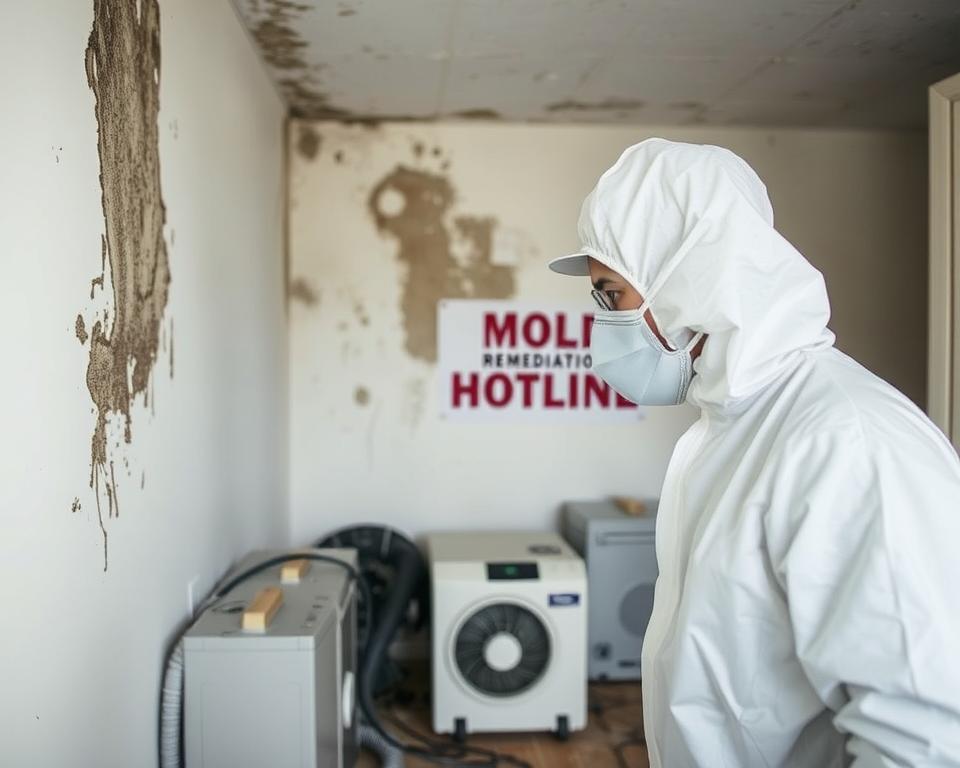The EPA estimates that nearly 70% of U.S. homes struggle with hidden fungal growth, yet most property owners mistake surface cleaning for a permanent fix. This oversight often leads to recurring problems, costing thousands in repeated treatments. Understanding the critical distinction between two common approaches could save time, money, and health risks.
Surface-level elimination targets visible spores but ignores root causes like moisture buildup or ventilation flaws. A comprehensive strategy goes deeper, addressing sources while preventing regrowth. Property managers often discover this difference only after temporary fixes fail repeatedly.
Factors like affected area size, air quality concerns, and structural vulnerabilities determine which method works best. Professional assessments become vital when dealing with porous materials or HVAC systems, where incomplete treatment risks spreading contaminants.
Key Takeaways
- Surface cleaning alone fails to prevent 85% of recurring growth cases
- Comprehensive strategies address moisture sources and air quality
- Health risks increase when underlying causes remain untreated
- Material type and infestation scale guide solution selection
- Certified inspections prevent cross-contamination in sensitive areas
Understanding Mold: The Basics
Mold exists naturally in outdoor and indoor spaces but becomes a concern when specific conditions allow colonies to form. This living organism reproduces through microscopic spores that travel through air currents, settling on surfaces where moisture and organic materials create ideal breeding grounds.
Mold Characteristics and Growth Conditions
Fungal colonies thrive in environments with three key elements: consistent humidity above 60%, accessible food sources like wood or drywall, and temperatures between 40-100°F. Bathrooms with weak ventilation, kitchens with steam buildup, and basements with water leaks often meet these criteria perfectly.
Common household materials provide nourishment for spores. Paper products, ceiling tiles, and even dust particles can sustain mold growth. Dark corners behind appliances or under sinks frequently harbor hidden infestations due to limited airflow.
Health Implications of Mold Exposure
Respiratory issues top the list of concerns. Inhaled spores trigger reactions ranging from temporary sneezing fits to chronic asthma flare-ups. Sensitive individuals might experience skin rashes or eye irritation within hours of contact.
Long-term exposure carries greater risks. The CDC notes that persistent health effects can develop in people with compromised immune systems. Children and elderly residents face higher vulnerability to respiratory complications in mold-rich environments.
What is Mold Removal?
Homeowners often spot fuzzy patches on walls and rush to scrub them away, not realizing this approach might worsen the problem. Mold removal focuses on eliminating fungal growth from surfaces through chemical treatments and physical cleaning. This method works best for small, isolated outbreaks where colonies haven’t penetrated deep into materials.
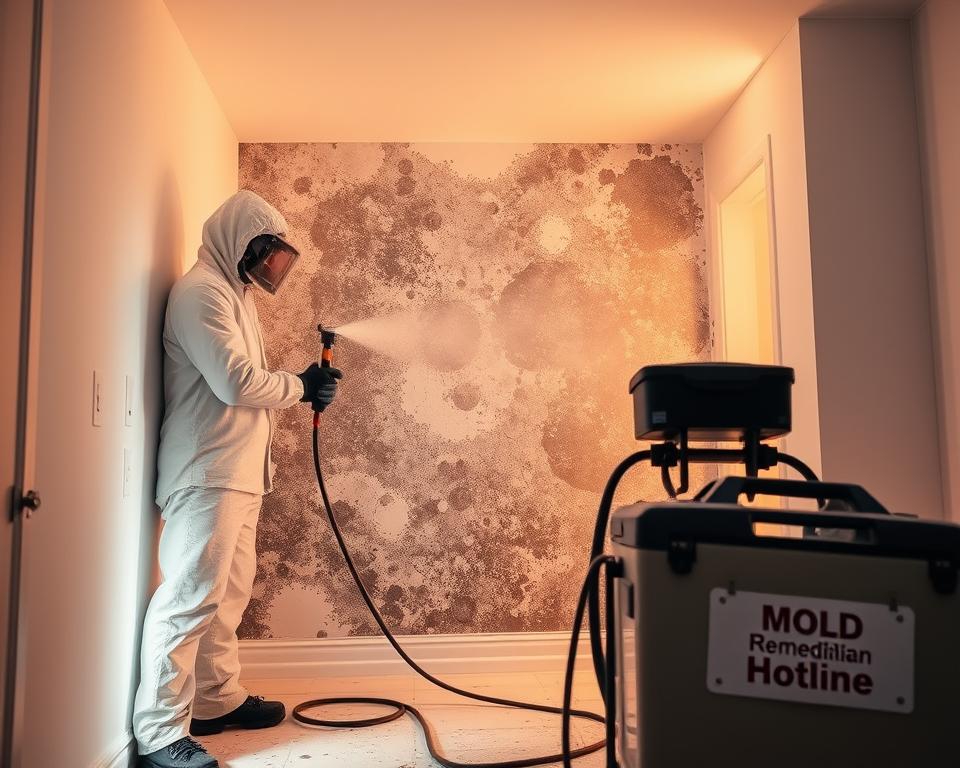
Process and Limitations
The standard mold removal process begins with identifying affected areas using visual checks. Professionals or DIYers then apply antimicrobial solutions to kill surface spores. Scrubbing with stiff brushes removes stains, followed by wiping with damp cloths to collect debris.
While effective for immediate cosmetic improvements, this approach has critical gaps. Cleaning agents can’t reach spores embedded in porous surfaces like drywall or wood. Studies show 68% of treated areas regrow fungi within six months if humidity persists.
| Process Step | Action Taken | Key Limitations |
|---|---|---|
| Surface Inspection | Visual assessment of affected areas | Misses hidden colonies in walls or HVAC systems |
| Chemical Application | Spraying antimicrobial solutions | Doesn’t eliminate spores in porous materials |
| Physical Cleaning | Scrubbing with brushes or cloths | Leaves microscopic particles in the air |
For lasting results, experts recommend pairing surface cleaning with moisture control strategies. Without addressing leaks or ventilation flaws, temporary fixes simply reset the growth clock.
What is Mold Remediation?
Structural integrity and occupant health depend on addressing fungal threats at their source. Unlike basic cleaning methods, this process combines elimination with long-term defensive measures.
Comprehensive Approach Explained
Professional remediation services treat infestations as system failures rather than surface issues. Specialists hunt for hidden moisture sources using infrared cameras and air quality tests. They analyze wall cavities, subflooring, and ductwork where colonies often thrive undetected.
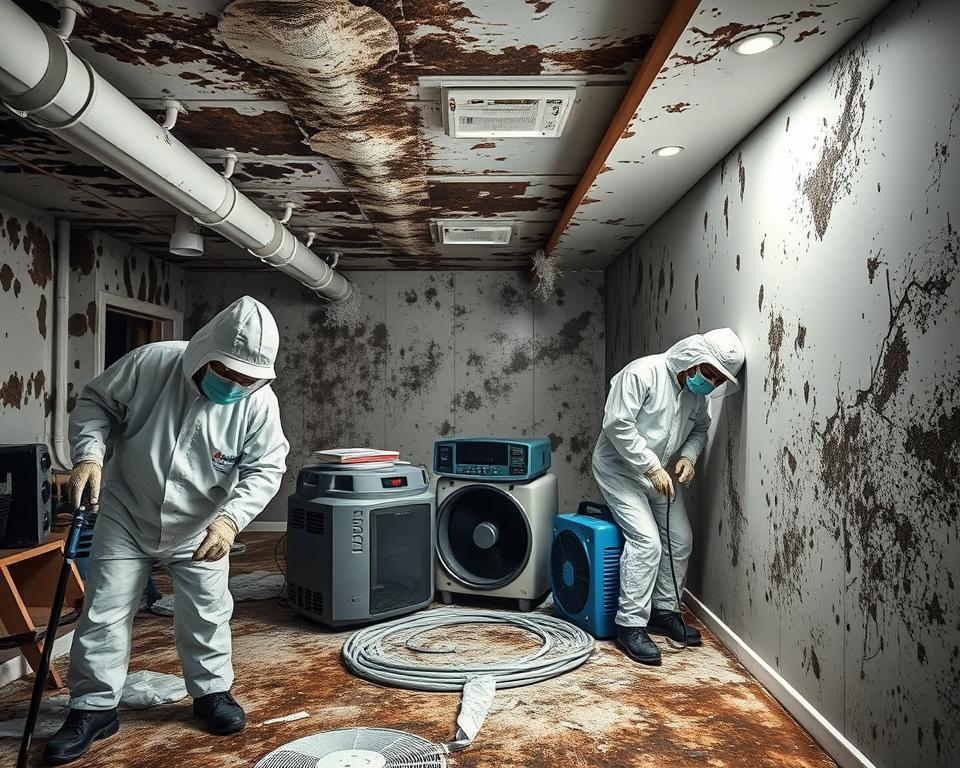
The strategy focuses on three pillars: eradicating existing growth, correcting environmental triggers, and blocking recurrence. Antimicrobial treatments pair with humidity controls and material upgrades to create hostile conditions for spores.
Step-by-Step Remediation Process
Certified teams follow strict protocols:
- Assessment: Air sampling and moisture mapping identify contamination zones
- Containment: Plastic barriers isolate affected areas during work
- Material removal: Irreparably damaged components get safely discarded
- Deep cleaning: HEPA vacuums and specialized solutions remove microscopic particles
Post-treatment verification includes air tests comparing indoor/outdoor spore counts. Successful projects achieve balance ratios below 1:1, proving restored air safety.
This method transforms vulnerable spaces into fortified environments. It protects investments while safeguarding respiratory health through scientific precision.
When to Choose Remediation Over Mold Removal
Deciding between quick fixes and lasting solutions becomes crucial when dealing with household fungi. Surface treatments work for minor outbreaks, but certain red flags demand professional intervention.
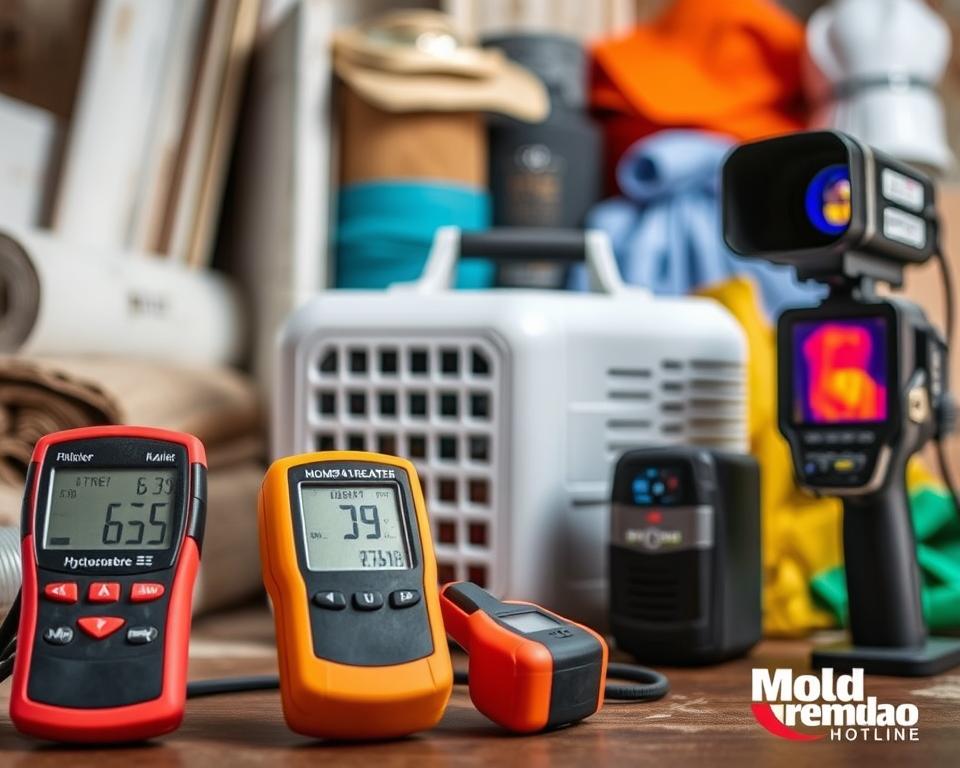
Indicators for Opting for Remediation
Size matters first. The 10-square-foot rule serves as a critical threshold – infestations larger than this often indicate deeper structural issues. Hidden colonies in air ducts or wall cavities frequently spread beyond visible areas.
Health reactions provide urgent clues. Unexplained coughing or skin irritation that improves outdoors suggests airborne spores. “Persistent symptoms mean spores are likely circulating through your ventilation,” notes indoor air specialist Dr. Ellen Torres.
Musty odors that linger after cleaning signal hidden growth. Recurring patches in the same spot prove surface cleaning fails to address moisture sources. Materials like drywall or insulation often require specialized treatment to prevent regrowth.
Long-Term Benefits Compared to Removal
Comprehensive strategies save money over time. While basic mold removal costs less upfront, repeated treatments drain budgets. Professional mold remediation eliminates root causes, reducing recurrence rates by 92% in EPA-tracked cases.
Improved air quality protects vulnerable family members. Advanced containment methods prevent spore migration during treatment. Property values stay protected when structural integrity remains intact.
“Investing in thorough remediation cuts long-term health risks and repair costs by addressing the problem holistically.”
Homeowners gain peace of mind knowing experts resolved both visible growth and invisible triggers. This approach transforms vulnerable spaces into environments where fungi struggle to regain footing.
Comparing Results: Short-Term vs. Long-Term Solutions
Surface cleaning creates temporary fixes, while strategic approaches deliver lasting protection. Nearly 60% of households report fungal regrowth within three months of basic treatments, according to indoor environmental studies. Lasting success requires understanding how different methods affect living spaces and health.
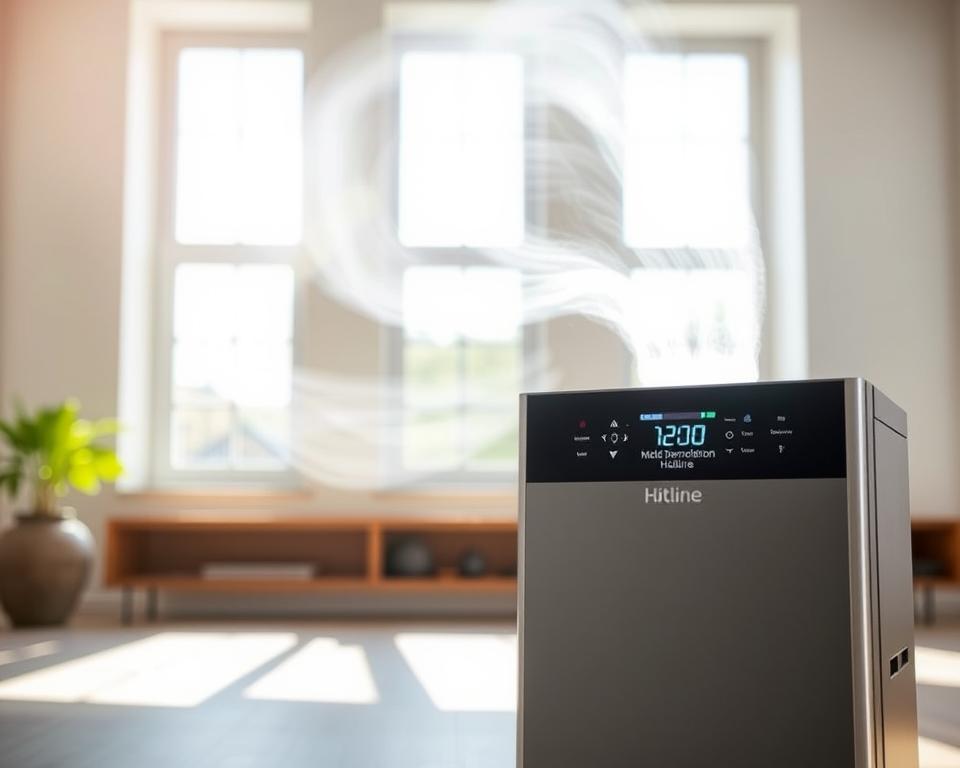
Risk of Fungal Regrowth
Quick-cleaning methods often miss hidden spores in porous materials. Without addressing humidity sources, treated areas become breeding grounds again within weeks. A 2023 Johns Hopkins study found 79% of scrubbed surfaces showed renewed growth when moisture persisted.
Comprehensive strategies break this cycle. Professional teams implement dehumidification systems and seal leak-prone areas. This dual-action approach reduces regrowth chances by 94% compared to surface-only treatments.
Impact on Indoor Air Quality
Basic cleaning disturbs spores, temporarily increasing airborne particles. HEPA filtration systems in advanced processes capture 99.97% of contaminants. Post-treatment air tests show spore counts drop below outdoor levels in properly remediated spaces.
“Air quality improvements last years, not days, when you eliminate sources instead of symptoms,” states environmental scientist Dr. Marco Ruiz. Proper ventilation upgrades and moisture barriers create healthier environments that prevent future outbreaks naturally.
Role of Professional Services in Mold Management
Tackling fungal infestations without proper training often leads to incomplete solutions and health hazards. Certified teams bring scientific precision to mold management, combining cutting-edge technology with industry-approved protocols. Their interventions stop recurring outbreaks while protecting both property value and respiratory wellness.
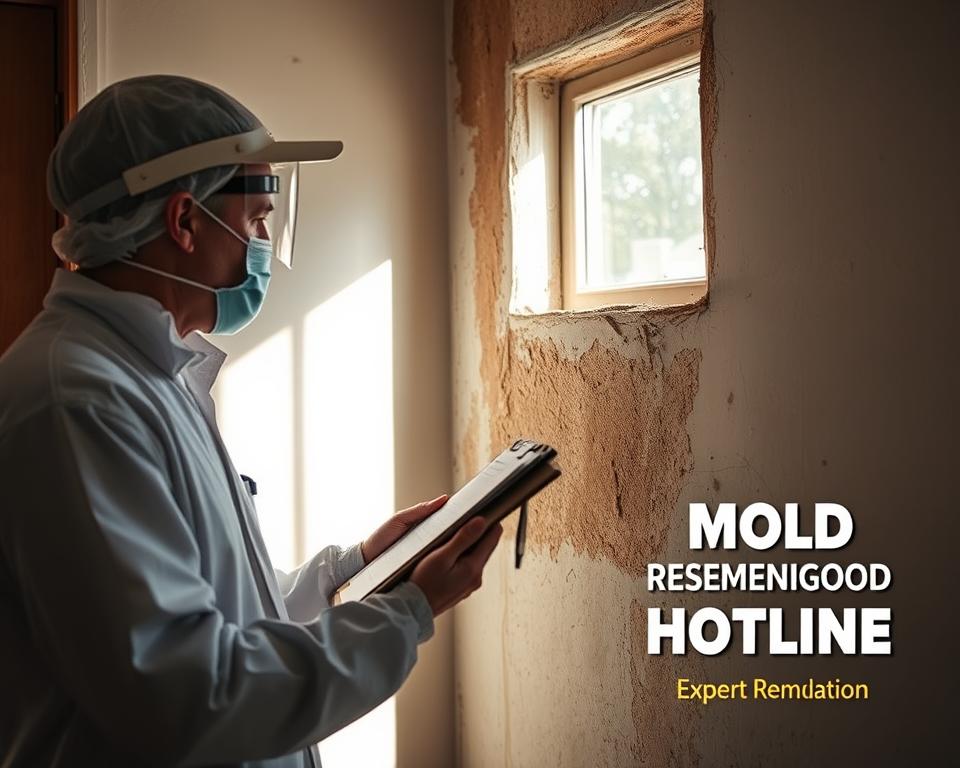
Expert Assessments and Testing
Specialists start with diagnostic tools most homeowners lack. Infrared scanners detect hidden moisture in walls, while air samplers identify airborne spore types. These professional mold inspections reveal contamination levels invisible to the naked eye.
Comprehensive evaluations map humidity sources and material vulnerabilities. Experts then create tailored plans addressing both current growth and future risks. This data-driven approach prevents guesswork that often derails DIY attempts.
Advanced Remediation Techniques
Containment chambers with negative air pressure stop spore spread during treatment. Industrial-grade dehumidifiers dry structural cavities, and antimicrobial foggers neutralize residual particles. These professional services exceed what store-bought kits can achieve.
| Factor | DIY Approach | Professional Solution |
|---|---|---|
| Detection Accuracy | Visual inspection only | Thermal imaging + air quality tests |
| Containment | Basic plastic sheeting | Sealed chambers with air scrubbers |
| Treatment Depth | Surface cleaning | Material replacement + preventive barriers |
Post-remediation verification includes air quality comparisons and moisture checks. This ensures spaces meet safety standards before reoccupation. As one industry leader notes: “Proper mold management isn’t about elimination—it’s about creating environments where growth can’t restart.”
Mold Inspection and Prevention Strategies
Proactive measures transform vulnerable spaces into mold-resistant environments. Effective defense combines regular checks with targeted repairs, stopping problems before they start. Certified inspectors use thermal imaging and moisture meters to spot risks invisible during casual glances.
Routine Checks Save Resources
Schedule seasonal inspections focusing on high-risk zones like basements and crawl spaces. Professionals test air quality and check plumbing systems for early signs of trouble. These assessments often reveal hidden water damage behind walls or under flooring.
Maintain gutters and drainage systems to redirect rainwater away from your home. Replace cracked caulking around windows and doors. These simple steps prevent 74% of basement infestations according to building science studies.
Eliminate Moisture Sources
Fix dripping faucets within 24 hours – even minor leaks create ideal breeding conditions. Use dehumidifiers in damp areas to keep humidity below 50%. Encapsulate crawl spaces with vapor barriers to block ground moisture.
After storms, inspect attics for roof leaks and dry affected areas completely. Upgrade ventilation in bathrooms and kitchens where steam accumulates. Proper airflow reduces condensation that fuels fungal growth.
Combining vigilant inspections with swift repairs creates lasting protection. This approach safeguards both property value and respiratory health through science-backed prevention tactics.
